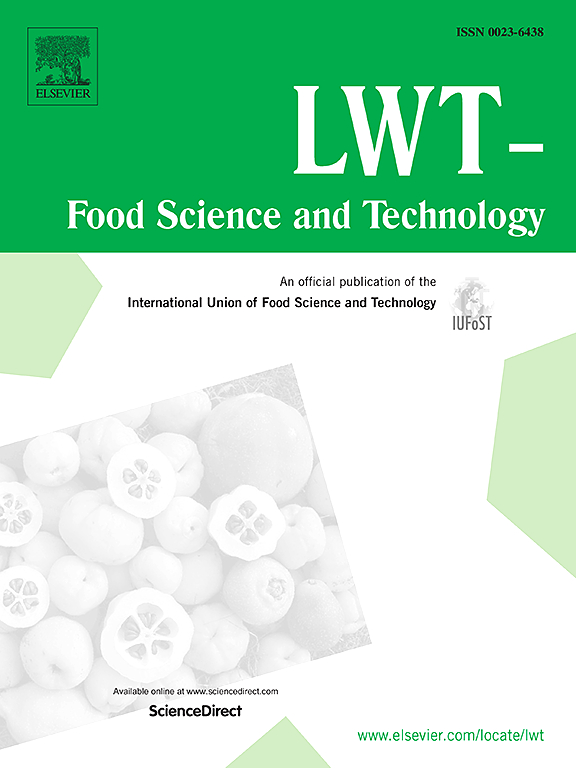Whole-genome analysis of stress resistance-related genes in Listeria monocytogenes
IF 6.6
1区 农林科学
Q1 FOOD SCIENCE & TECHNOLOGY
引用次数: 0
Abstract
Listeria monocytogenes is a crucial foodborne pathogen with significant public health implications. This study analyzed whole-genome sequences (WGS) of L. monocytogenes strains from public databases, examining associations between resistance genes, lineage, strain type, isolation source, and geography. Results revealed that after eliminating duplicates and strains with incomplete WGS, a total of 316 strains were deemed suitable for subsequent analyses. Within these strains, lineages I and II were extensively distributed, predominantly isolated from clinical and food sources. 56.65% of these strains fell into seven major Clonal Complexes (CC), identified by Multilocus Sequence Typing (MLST), correlating significantly with isolation information. Analysis of 46 resistance-related genes showed a high consistency of resistance genes in the same type of strains, hinting at a potential causal chain of ‘food-food environment-evolution of L. monocytogenes’. Moreover, the standard strains exhibit similar gene carriage rates as the sample strains, with multiple variations observed in acid-resistance genes. In conclusion, through a comprehensive analysis of the L. monocytogenes genome sequences, this study deepens our understanding of the differences and associations between its lineage, strain typing, isolation sources, geographical distribution, and resistance genes, thereby providing a scientific basis for formulating more effective prevention and control strategies.
李斯特菌抗压相关基因的全基因组分析
单核细胞增生李斯特菌是一种重要的食源性病原体,对公共卫生有重大影响。本研究分析了来自公共数据库的单核细胞增生李斯特氏菌菌株的全基因组序列(WGS),研究了抗性基因、品系、菌株类型、分离来源和地理位置之间的关联。结果显示,在剔除重复株和WGS不完整的菌株后,共有316株菌株被认为适合进行后续分析。在这些菌株中,品系 I 和 II 分布广泛,主要分离自临床和食物来源。通过多焦点序列分型(MLST)鉴定,这些菌株中有 56.65% 属于七个主要克隆复合体(CC),与分离信息显著相关。对 46 个抗性相关基因的分析表明,同类菌株的抗性基因具有高度的一致性,暗示了 "食品-食品环境-单核细胞增生梭菌进化 "的潜在因果链。此外,标准菌株与样本菌株表现出相似的基因携带率,在耐酸基因中观察到多种变异。总之,本研究通过对单核细胞增生性酵母菌基因组序列的全面分析,加深了我们对其品系、菌株分型、分离来源、地理分布和抗性基因之间的差异和关联的认识,从而为制定更有效的防控策略提供了科学依据。
本文章由计算机程序翻译,如有差异,请以英文原文为准。
求助全文
约1分钟内获得全文
求助全文
来源期刊

LWT - Food Science and Technology
工程技术-食品科技
CiteScore
11.80
自引率
6.70%
发文量
1724
审稿时长
65 days
期刊介绍:
LWT - Food Science and Technology is an international journal that publishes innovative papers in the fields of food chemistry, biochemistry, microbiology, technology and nutrition. The work described should be innovative either in the approach or in the methods used. The significance of the results either for the science community or for the food industry must also be specified. Contributions written in English are welcomed in the form of review articles, short reviews, research papers, and research notes. Papers featuring animal trials and cell cultures are outside the scope of the journal and will not be considered for publication.
 求助内容:
求助内容: 应助结果提醒方式:
应助结果提醒方式:


